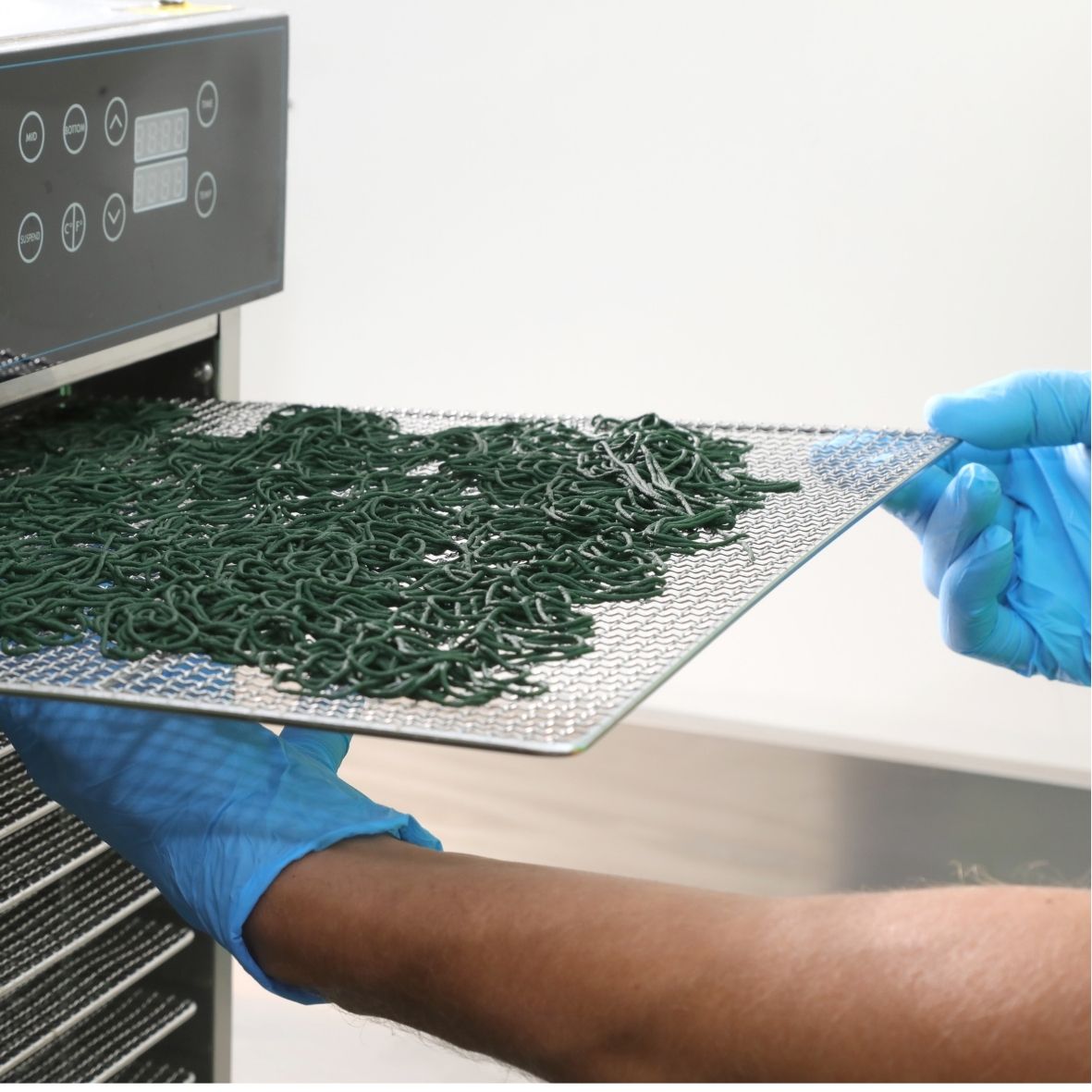Quality Organ
The spirulina 99% on the market is industrial and its quality is diminished by the way it is processed. On the one hand, the homogenization process breaks the cells and denatures the protein. The spirulina is then sprayed with a jet of hot air at 210°C in a process known as spray drying. This processing causes vitamins and other beneficial substances for the body to disappear or even transform into harmful elements for the body, as is the case with omega fatty acids that are transformed into trans fatty acids.
Furthermore, in different analyses, imported spirulina is often loaded with heavy metals and cyanotoxins, and to make matters worse, they often extract some of the active ingredients from spirulina, to resell them separately… (link spirulina network)
Faced with this industrial production offered at very low prices in Organa we differentiate ourselves in four main pillars which we call the ORGAN COMMITMENT
Organizational commitment
Production method:
- We grow under a greenhouse, protected from wind, sand, insects and other animals.
- We grow with shading mesh: it increases the quality of the product and reduces water consumption.
- We offer fresh produce and this is only possible when the hygiene conditions are optimal.
- We dehydrate at a low temperature (<40ºC) through an artisanal process.
- We collect early in the morning: when the spirulina has a higher percentage of protein.
- Made with love: we bond with spirulina, chat and meditate next to it.
Circular economy:
- Energy self-sustainable farm: with 100% self-produced and renewable energy.
- All packaging is 100% compostable and biodegradable from renewable raw materials.
- The water from the crop is reintroduced into the pool, further reducing the consumption of this scarce resource.
European regulations:
- Organa meets the highest quality standards.
- Microbiological and heavy metal analyzes according to the European Standard.
Direct sales:
- High production costs do not allow us to enter the long distribution chain.
- We are proud to say that we know almost all of our customers so that we can offer them a tailored service.
Do you want to be part of the community?
Organize's Team

Joan Solé
The culprit of it all
Omnipresent and omnipresent at the same time, he is the person who loves spirulina the most.
He is the one who conducts the great Organa orchestra. He researches, studies and works so that spirulina is artisanal, sustainable, of the highest quality and that everyone can enjoy it. It is also involved in ensuring local and global food sovereignty.

Eve Columbus
She is the one who will patiently explain to you again and again what spirulina is, what it is for and how to take it.
If you ask him, he will even give you a guided tour.
He is patient enough to remind you every week if you need spirulina, like the mother who never gets tired of asking if you need anything else.

Joel Alonso
He is the one who gets up at 5 in the morning so that you have the highest quality spirulina.
Care for and pamper spirulina as if it were one of your own family.
As a triathlete, Iron-man and ultra-distance runner, he is the example of the fruits of spirulina in sport (although his genetics probably also has something to do with it).

Ariadna Serra
The one who tells you how good spirulina is but that it won't cure everything.
She is the one who will advise and accompany you in any health query, the one who organizes healthy challenges to get you in shape and the one who inspires you with easy recipes so you can include spirulina in your life .
The green-and-blue revolution
At Organa Spirulina we like to practice what we call the green-and-blue revolution.
In the primary sector in the 60s, what is known as the green revolution took place, where thanks to the use of advanced technology and also to the indiscriminate use of chemical products, it was possible to dramatically increase the global production of food
Yet this unprecedented increase in human history in food production led to terrible side effects: contamination of many aquifers (can you remember a source of drinking water from thirty years ago and its current state?) , the loss of genetic diversity, or the eutrophication of rivers, lagoons and deltas.
That's why at Organa we reconstruct the concept and add the color blue to the green revolution; on the one hand we want to add the blue of planet Earth, because the generation of the food we eat must take into account the planet we live on. And on the other hand, we make a play on words with the dominant pigments in spirulina: blue, from phycocyanin, and green, from chlorophyll.
So, we propose a double revolution, where in addition to continuing to increase the efficiency of food production, we also take into account the natural balance of the places where food is produced.
Are you joining the green-and-blue revolution?






